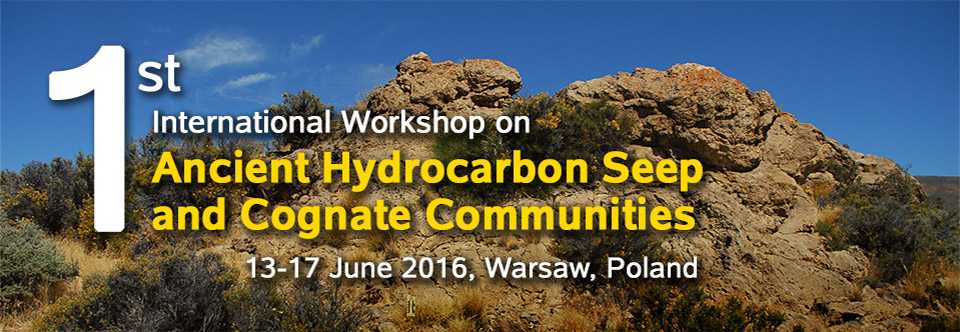
IRMS VS. ION MICROPROBE C AND O ISOTOPE MEASUREMENTS OF OLIGOCENE COLD SEEP CARBONATES FROM THE OUTER CARPATHIANS: HOW MUCH INFORMATION CAN BE LOST BY ANALYZING BULK ROCK SAMPLES?
Maciej J. BOJANOWSKI1, Christelle GUILLERMIER2, and Ian A. FRANCHI3
1Institute of Geological Sciences, Polish Academy of Sciences, ul. Twarda 51/55, 00-818 Warszawa, Poland; 2National Resource for Imaging Mass Spectrometry, 65 Landsdowne St., Cambridge, MA, USA; 3Planetary and Space Sciences, The Open University, MK7 6AA, Milton Keynes, UK.
Corresponding author: mbojan@twarda.pan.pl
Stable C and O isotope analysis is one of the most important methods used for identification and
characterization of methane-derived carbonates. These analyses are performed routinely on powdered
carbonate samples with the use of isotope ratio mass spectrometry (IRMS). Seep carbonates
are typically composed of a mixture of different carbonate grain types, so the results are in fact average
values. The main component is fine carbonate cement, which precipitates continuously over
some time and gradually fills the available pore space. Many processes may significantly modify
C and O isotopic composition of pore fluid and the precipitating cements during this period. The
average values obtained for the powdered samples may, therefore, lead to erroneous conclusions.
Results of a pioneer experiment to perform stable C and O isotope measurements using an ion
microprobe on seep carbonates is herein presented. Seep carbonates forming a carbonate buildup
embedded in the Oligocene Krosno shales (Outer Carpathians) were investigated. Stable C and O
isotope composition was measured in calcite cements using NanoSIMS ion microprobe and IRMS.
Results of IRMS analysis on powdered bulk samples produced ambiguous results and did not indicate
a clear relation to anaerobic oxidation of methane. NanoSIMS measurements were performed
in situ within small spots (5 × 5 μm) in calcite crystals, which revealed a huge spread of δ13C (from
-54 to 7‰) and high δ18O values up to 6‰. These results unequivocally confirmed that the rocks
formed as a result of methane hydrate dissociation, which liberated heavy oxygen-containing water
and light carbon-containing methane. They prove that other methods of measuring isotopic composition
would not reveal the true origin of these rocks, because they would show average values
due to a lower spatial resolution. This work provides a basis for the application of NanoSIMS to
tracing diagenetic pathways from various, even complexly formed seep carbonates, clathrites in
particular. It revealed the limitations of the currently used methodology and demonstrated that ion
microprobe may become a valuable tool for the examination of methane-derived carbonates.
